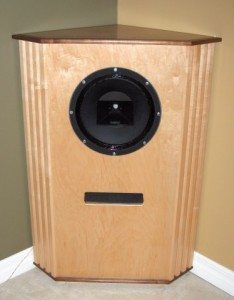 When a speaker or sound source is placed in a corner so it is near three surfaces (like the junction between two walls and the floor), it is said to be in ⅛ space.
When a speaker or sound source is placed in a corner so it is near three surfaces (like the junction between two walls and the floor), it is said to be in ⅛ space.
This is similar to the concept of ½ space (up against one wall) and ¼ space (at a junction between two walls). When sound sources are placed near surfaces in this way, more of the energy moves forward into the listening space. Putting a source into ⅛ space yields an increase of approximately 3dB more sound power level than ¼ space, and 6dB more than ½ space.
The Doppler Effect, named for Austrian physicist Christian Doppler, is the apparent change in pitch of the sound that occurs when the source of the sound is moving relative to the listener.

Now for the real-life application. If a loudspeaker is producing both low and high frequencies, the low frequencies will cause the cone to move toward and then subsequently away from the listener (obviously high frequencies do this as well, but the lows are much more pronounced). As this is happening, the perceived pitch of the higher frequency sounds rise and fall at a rate (or rates) equal to the low frequencies moving the cone. This frequency modulation of the high frequency by the low frequency is called “Doppler distortion”. It manifests as “muddiness” of sound.
Keep these concepts in mind as you decide on the location and orientation of loudspeakers and other sources in your church’s sound system. A wedge monitor placed on the floor at the edge of the stage will be in ½ space and will yield slightly higher SPL. The best way to avoid Doppler Distortion is to choose loudspeakers with separate high, mid-range and low frequency components – 3-way if budget will allow, or 2-way at the very least – as opposed to one full range driver.
